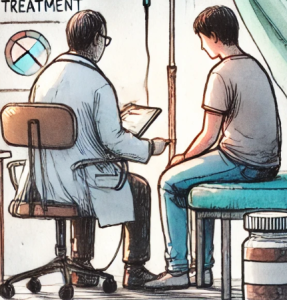
Why State Policy Shapes HCBS Access More Than Spending
In one state, a 77-year-old woman waits three months for someone to help her bathe safely. Across the border, her friend gets the same service in days. Both qualify for Medicaid. Why the difference?
That question drives a new multi-state analysis by researchers from the University of Minnesota and Brown University. Their study looked at 13,654 older adults receiving publicly funded home- and community-based services (HCBS) in 13 states. The goal: find out which state policies actually reduce unmet service needs—cases where people need support but don’t receive it.
The Big Picture: Policy Shapes Experience
HCBS programs help older adults and people with disabilities live independently instead of entering nursing homes. They include personal care, transportation, meal delivery, adult day services, and caregiver support. Yet access varies dramatically. In 2019, states spent between $127 and $867 per client. Some expanded Medicaid and adopted managed long-term services and supports (LTSS); others didn’t.
The research team asked: Do these state-level choices affect whether residents actually get the help they need?
Inside the Study
Using data from the National Core Indicators–Aging and Disability (NCI-AD) survey (2016-2019), the team linked consumer responses with state Medicaid data on four policy levers:
- HCBS vs. institutional-care spending ratio
- HCBS spending per client
- Percent of Medicaid beneficiaries in managed care
- Medicaid expansion status
They also compared outcomes across four funding programs: traditional Medicaid waivers, Managed LTSS, Older Americans Act (OAA) programs, and PACE (Program of All-Inclusive Care for the Elderly).
Key Findings at a Glance
Key Insight #1: More managed care = fewer unmet needs: For every 10-point increase in Medicaid managed-care enrollment, odds of unmet needs dropped 8 percent (aOR 0.92).
Key Insight #2: Medicaid expansion matters: Consumers in expansion states were 20 percent less likely to report unmet needs (aOR 0.80).
Key Insight #3: Spending balance isn’t everything: Paradoxically, states spending more on HCBS relative to nursing homes reported higher unmet needs (aOR 1.19)—perhaps because demand rose faster than capacity.
Key Insight #4: Program design counts: Compared with traditional waivers, unmet-need odds were 33 percent lower in Managed LTSS and 61 percent lower in PACE participants.
What This Means in Practice
For state and local health departments
- Pair financial rebalancing with workforce and capacity investment—funding alone can’t guarantee service delivery.
- Use consumer-reported metrics (like unmet-need rates) in HCBS quality dashboards and value-based purchasing contracts.
For policymakers
- Maintain or pursue Medicaid expansion to extend eligibility and stabilize provider networks.
- Strengthen oversight of Managed LTSS and PACE—the study suggests they work when accountability is strong.
For community-based organizations
- Track local unmet-need trends to inform advocacy and funding requests.
- Partner with managed-care entities to coordinate referrals and reduce wait times.
Why “More Spending” Isn’t Always Better
At first glance, it’s counterintuitive: higher HCBS-to-institutional spending correlated with more unmet need. Researchers suggest a “demand-eruption” effect—greater investment raises awareness, encouraging more people to seek services than the system can supply. This mismatch underscores a broader lesson: money without infrastructure can magnify inequities. States must pair funding with workforce development, care-coordination systems, and data transparency.
COVID-19 Context
Although data stop at 2019, the pandemic magnified these gaps. Service suspensions, staff shortages, and reliance on informal caregivers left thousands without help. Post-2020 federal actions—especially American Rescue Plan Act (ARPA) HCBS investments—now offer a test: will added dollars reduce unmet needs, or repeat the imbalance between funding and delivery?
Barriers & What’s Next
- Workforce shortages: Even generous budgets fail without enough direct-care workers.
- Administrative fragmentation: Separate funding streams (waivers, OAA, PACE) create red tape and uneven access.
- Uneven data infrastructure: Only 13 states contributed to this dataset; many lack comparable consumer-reported measures.
Future research should examine post-ARPA outcomes, telehealth expansion, and state innovations such as caregiver stipends or bundled-service models.
Open Questions
- How can states ensure that rising HCBS investments translate into actual hands-on help?
- What accountability metrics best capture consumer experience, not just system cost?
- Could Managed LTSS or PACE models be scaled equitably without sacrificing choice?



